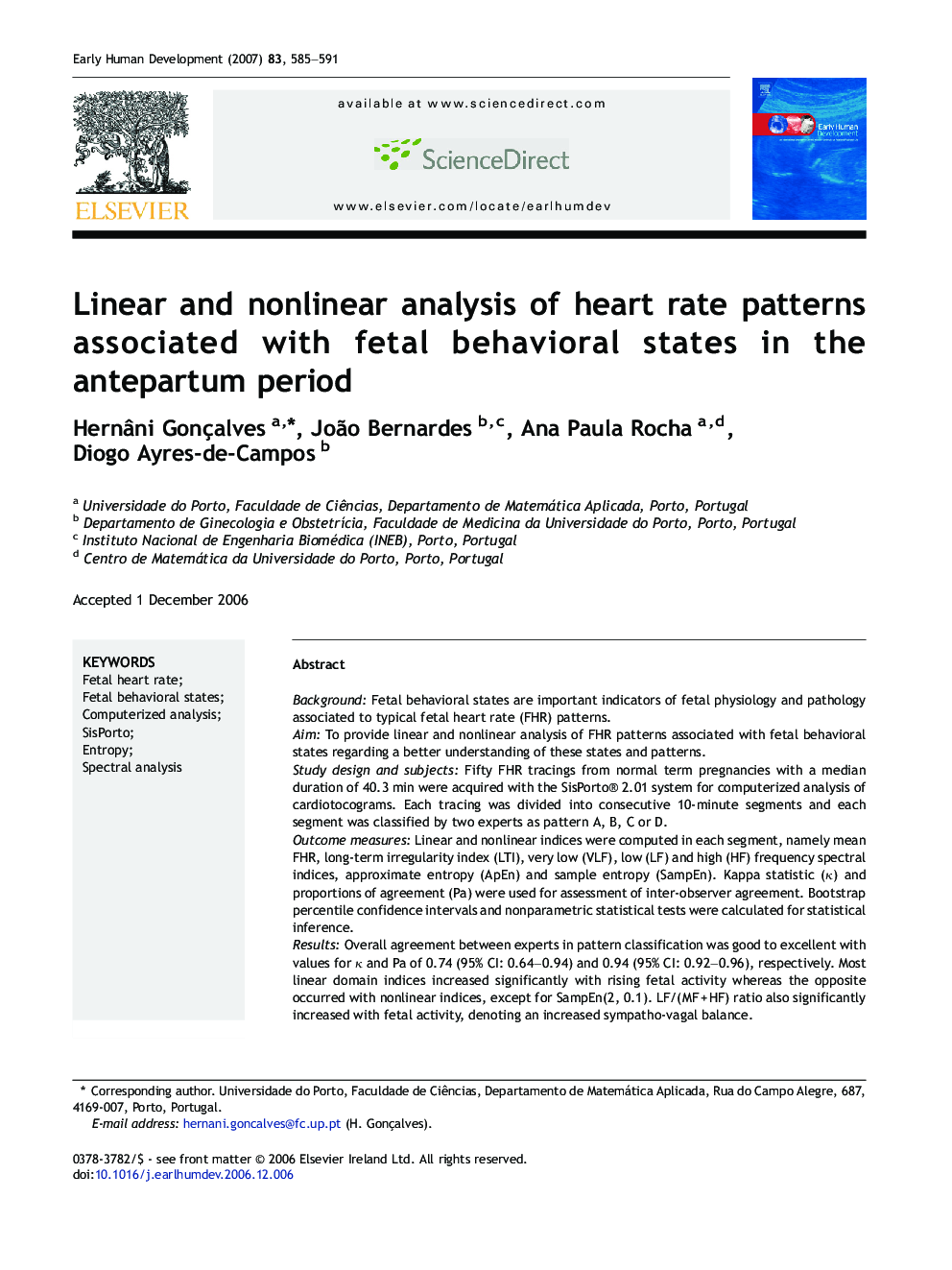| Article ID | Journal | Published Year | Pages | File Type |
|---|---|---|---|---|
| 3918600 | Early Human Development | 2007 | 7 Pages |
BackgroundFetal behavioral states are important indicators of fetal physiology and pathology associated to typical fetal heart rate (FHR) patterns.AimTo provide linear and nonlinear analysis of FHR patterns associated with fetal behavioral states regarding a better understanding of these states and patterns.Study design and subjectsFifty FHR tracings from normal term pregnancies with a median duration of 40.3 min were acquired with the SisPorto® 2.01 system for computerized analysis of cardiotocograms. Each tracing was divided into consecutive 10-minute segments and each segment was classified by two experts as pattern A, B, C or D.Outcome measuresLinear and nonlinear indices were computed in each segment, namely mean FHR, long-term irregularity index (LTI), very low (VLF), low (LF) and high (HF) frequency spectral indices, approximate entropy (ApEn) and sample entropy (SampEn). Kappa statistic (κ) and proportions of agreement (Pa) were used for assessment of inter-observer agreement. Bootstrap percentile confidence intervals and nonparametric statistical tests were calculated for statistical inference.ResultsOverall agreement between experts in pattern classification was good to excellent with values for κ and Pa of 0.74 (95% CI: 0.64–0.94) and 0.94 (95% CI: 0.92–0.96), respectively. Most linear domain indices increased significantly with rising fetal activity whereas the opposite occurred with nonlinear indices, except for SampEn(2, 0.1). LF/(MF + HF) ratio also significantly increased with fetal activity, denoting an increased sympatho-vagal balance.ConclusionsResults support the hypothesis that entropy and linear variability indices measure different FHR features. FHR patterns associated with active sleep (B) and active wakefulness (D) evidenced more signs of autonomous nervous system activity, with sympatho-vagal imbalance, and less signs related to complexity or irregularity control systems than patterns associated with calm sleep (A) and calm wakefulness (C).
